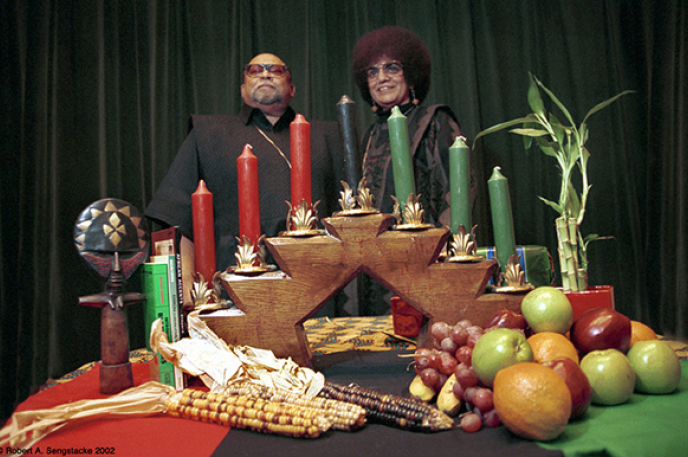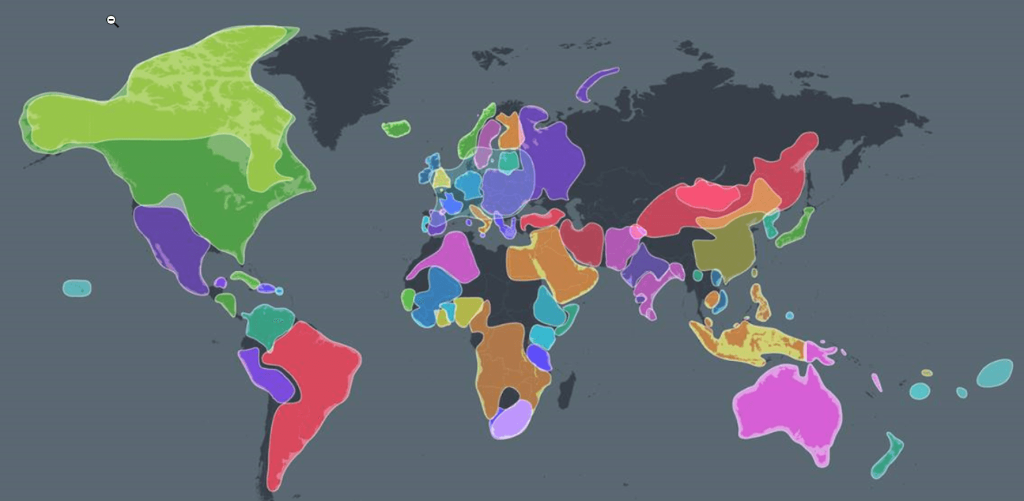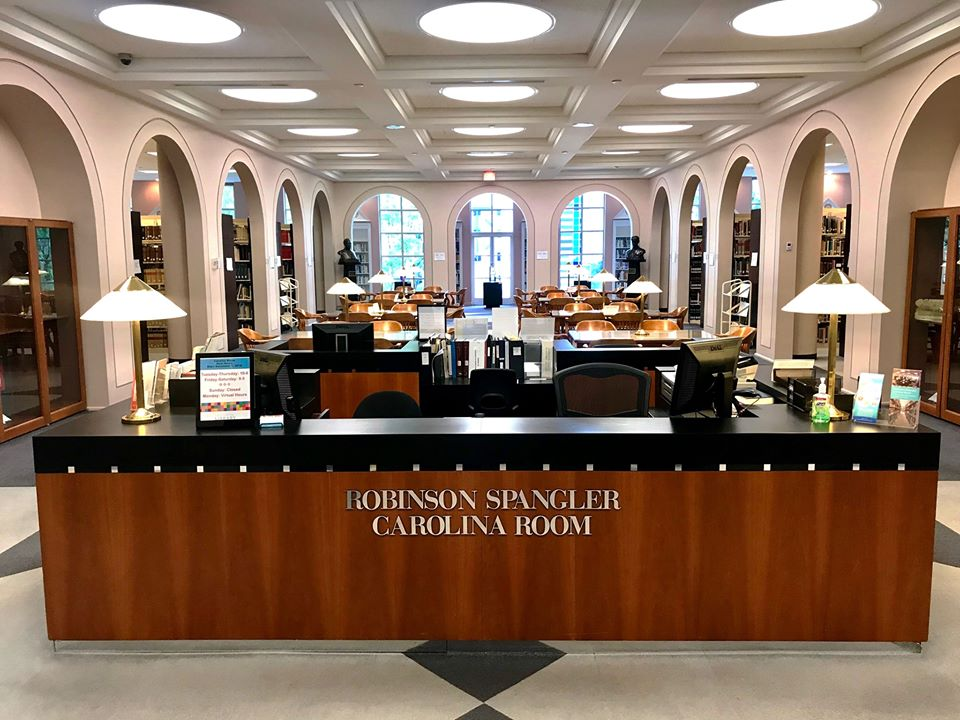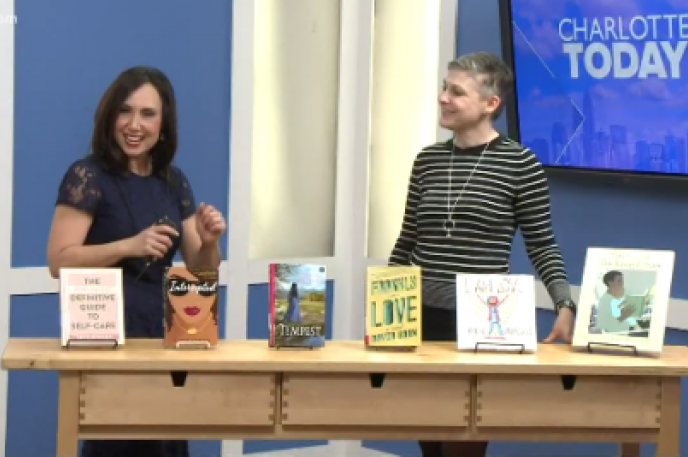
Charlotte Today: Books to Movies
March 25, 2020
Library Branch Channel Leader and Interim Director of Libraries, Dana Eure, made a guest appearance on WCNC's Charlotte Today on Thursday, March 12, 2020 and shared six titles that moved from print to the big screen with “Books to Movies." Click here to search titles
Adult Fiction
Dune, by Frank Herbert; Coming to screen December 2020.
Follows the adventures of Paul Atreides, the son of a betrayed duke given up for dead on a treacherous desert planet and adopted by its fierce, nomadic people, who help him unravel his most unexpected destiny.
David Copperfield, by Charles Dickens; coming to screen May 2020
A classic tale of an orphan growing up in the 1800's of England. Intimately rooted in the author's own biography and written as a first-person narrative, "David Copperfield" charts a young man's progress through a difficult childhood in Victorian England to ultimate success as a novelist, finding true love along the way. Jeremy Tambling's provocative Introduction reveals subtle themes relevant today.
The Woman in the Window, by A.J. Flynn; coming to screen May 2020
"It isn't paranoia if it's really happening ... Anna Fox lives alone -- a recluse in her New York City home, drinking too much wine, watching old movies ... and spying on her neighbors. Then the Russells move next door: a father, a mother, their teenaged son. The perfect family. But when Anna sees something she shouldn't, her world begins to crumble -- and its shocking secrets are laid bare. What is real? What is imagined? Who is in danger? Who is in control? In this gripping Hitchcockian thriller, no one and nothing are what they seem."—
Young Adult Fiction
P.S. I Still Love You, by Jenny Han; coming to screen February 2020
Lara Jean didn't expect to really fall for Peter. She and Peter were just pretending. Except suddenly they weren't. Now Lara Jean is more confused than ever. When another boy from her past returns to her life, Lara Jean's feelings for him return too. Can a girl be in love with two boys at once?
Juvenile Fiction
The Witches, by Roald Dahl; coming to screen October 2020
A young boy and his Norwegian grandmother, who is an expert on witches, together foil a witches' plot to destroy the world's children by turning them into mice.
The Tale of Peter Rabbit, by Beatrix Potter; coming to screen April 2020
The Tale of Peter Rabbit is the original classic by Beatrix Potter. The Tale of Peter Rabbit was first published by Frederick Warne in 1902 and endures as Beatrix Potter's most popular and well-loved tale. It tells the story of a very mischievous rabbit and the trouble he encounters in Mr McGregor's vegetable garden.



 Aubrey Hedrick, the Library’s Makerspace Coordinator, oversees the Library’s involvement. Each mask requires a faceplate mechanism, printed on the 3D printers. The parts are collected in batches and brought to a centralized area where they are sanitized and assembled with a face shield cut of clear plastic. Library printers can produce parts for about 20 masks each day. “We are contributing to a much larger community effort, with participants ranging from local makers to professional designers, led by a team from UNC Charlotte, Charlotte Latin, and Discovery Place Education. They’ve formed a group called Charlotte MEDI (Medical Emergency Device Innovation) and have reached out into the maker community to build a solid process and infrastructure to make it all happen. The Library is glad to help.”
Aubrey Hedrick, the Library’s Makerspace Coordinator, oversees the Library’s involvement. Each mask requires a faceplate mechanism, printed on the 3D printers. The parts are collected in batches and brought to a centralized area where they are sanitized and assembled with a face shield cut of clear plastic. Library printers can produce parts for about 20 masks each day. “We are contributing to a much larger community effort, with participants ranging from local makers to professional designers, led by a team from UNC Charlotte, Charlotte Latin, and Discovery Place Education. They’ve formed a group called Charlotte MEDI (Medical Emergency Device Innovation) and have reached out into the maker community to build a solid process and infrastructure to make it all happen. The Library is glad to help.”


 Dog lovers will find several courses to help with your “new coworker,” from Dog Training 101 and Advanced Dog Training to Dog Grooming and Dog Psychology. If you enjoy hearing the twitter of birds, consider learning about Bird Watching and then spend some time admiring your backyard visitors or learn more about marine life, snakes or wildlife rehabilitation.
Dog lovers will find several courses to help with your “new coworker,” from Dog Training 101 and Advanced Dog Training to Dog Grooming and Dog Psychology. If you enjoy hearing the twitter of birds, consider learning about Bird Watching and then spend some time admiring your backyard visitors or learn more about marine life, snakes or wildlife rehabilitation.  Many of us want to become better cooks or bakers, but don’t usually have the time. Universal Class can teach you basic cooking and baking skills or you can take a more tailored class on baking bread, pies or cookies; cake decorating; or even Italian and Tex Mex cooking. Feel free to share your new skills with your favorite Library staffers when we re-open!
Many of us want to become better cooks or bakers, but don’t usually have the time. Universal Class can teach you basic cooking and baking skills or you can take a more tailored class on baking bread, pies or cookies; cake decorating; or even Italian and Tex Mex cooking. Feel free to share your new skills with your favorite Library staffers when we re-open! 
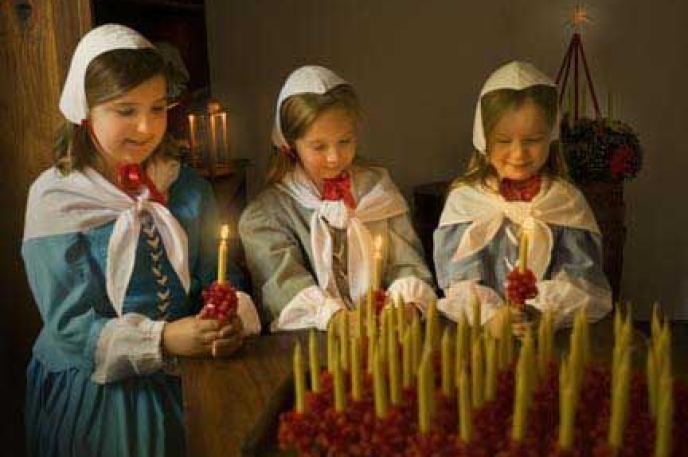
 t all ends with the eating of sweet buns served with milky coffee or tea.
t all ends with the eating of sweet buns served with milky coffee or tea. 